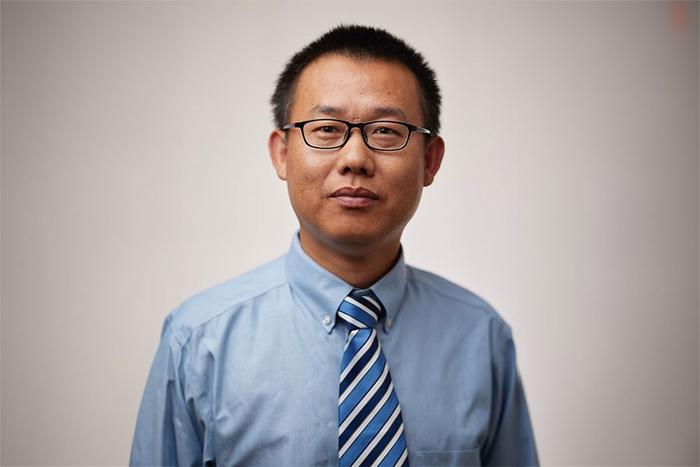In a groundbreaking advancement for the field of sustainable energy, researchers at the University of Oklahoma have unveiled transformative progress in protonic ceramic electrochemical cells (PCECs), a technology poised to revolutionize hydrogen production and energy storage solutions. These developments, detailed in two landmark studies published in the prestigious Nature family of journals, address fundamental challenges that have historically limited PCEC performance, particularly under the demanding conditions required for scalable commercial adoption.
One of the pivotal breakthroughs emerged from the team’s meticulous research on the electrolyte component of PCECs. Conventional designs have relied heavily on cerium-based ceramics, materials which suffer from accelerated deterioration when exposed to high steam concentrations and temperatures typical of industrial electrolysis processes. Ding and his collaborators circumvented this limitation by pioneering a synthesis pathway to fabricate pure barium zirconate-based electrolytes. These electrolytes demonstrate remarkable resilience, maintaining structural and functional integrity at unprecedentedly low operating temperatures. This temperature reduction is significant, as it diminishes thermal stress and reduces energy consumption, enabling cells to operate more reliably and efficiently in harsh electrochemical environments.
Coupled with electrolyte advancements were critical innovations in electrode architecture. The oxygen electrode, responsible for facilitating oxygen evolution and charge transport, was reimagined through the development of an ultra-porous nano-architectured interface exhibiting triple phase conductivity. This breakthrough design seamlessly integrates pathways for electrons, oxygen ions, and protons, thereby vastly improving reaction kinetics and enabling the electrode to sustain prolonged electrochemical stress without performance degradation. Graduate student Shuanglin Zheng played a key role in this effort, which not only enhances cell durability but also optimizes the balance between surface catalytic activity and mechanical robustness.
A particularly compelling aspect of this research lies in its adoption of a materials science-first approach, combining advanced ceramic processing techniques with nanoscale engineering. Through careful sintering protocols and microstructural tuning, Ding’s team achieved exceptional control over electrolyte densification, minimizing grain boundary defects and enhancing proton conductivity. This approach is a departure from traditional methods relying on doped ceria electrolytes, positioning barium zirconate electrolytes as a superior alternative that mitigates common degradation pathways such as mechanical cracking and chemical reduction.
The oxygen electrode’s nano-architecture leverages state-of-the-art fabrication methods to introduce a hierarchical pore structure, which maximizes surface area and facilitates efficient gas transport. This intricate design ensures that all three charge carriers—electrons, oxygen ions, and protons—can traverse the electrode simultaneously without impeding one another, dramatically boosting the kinetics of the oxygen evolution reaction. Such multi-conductive electrodes have long been theorized but rarely realized with practical stability under high electrolysis currents, making this a significant milestone.
The implications reach further into the domain of reversible energy devices. The enhanced PCECs have the potential to operate not only as electrolyzers but also as fuel cells, enabling bidirectional energy conversion. This versatility could facilitate more integrated and flexible energy systems, capable of adapting to fluctuating renewable energy supply and demand while contributing to grid stabilization.
Hanping Ding emphasizes that these advancements pave the way toward practical, cost-effective, and durable PCECs that can meet the rigorous demands of industrial-scale hydrogen production. “Our innovations in electrolyte chemistry and electrode microstructure directly address the core limitations that have hindered PCECs’ commercial potential,” Ding explains. “Our work bridges fundamental materials science with applied engineering, setting the stage for next-generation energy systems that are both sustainable and economically feasible.”
Furthermore, the insights derived from these studies offer valuable guidance for related technologies. Alkaline fuel cells, water electrolyzers, and even emerging biosensor devices stand to benefit from improved materials and architectures inspired by this research. This cross-pollination underscores the broad impact of the University of Oklahoma’s efforts on the wider landscape of clean energy development.
As global efforts intensify to transition away from fossil fuels and curtail greenhouse gas emissions, innovations such as these become increasingly critical. By pushing the frontiers of protonic ceramic technology, Ding’s research group contributes a vital piece to the puzzle of achieving scalable hydrogen economies and reliable energy storage solutions. Their work exemplifies how rigorous scientific inquiry, combined with creative engineering, can drive transformative change in energy technologies.
In summary, the University of Oklahoma’s contributions represent a decisive stride toward realizing the full promise of protonic ceramic electrochemical cells. With enhanced electrolyte stability at reduced temperatures and a radically improved oxygen electrode design, these cells are poised to overcome longstanding barriers and accelerate the global shift toward cleaner, more efficient energy technologies. The future of sustainable hydrogen production and advanced energy conversion looks brighter than ever, fueled by these cutting-edge materials innovations.
Article Title: Sintering protonic zirconate cells with enhanced electrolysis stability and Faradaic efficiency
News Publication Date: 14-Mar-2025
Web References: 10.1038/s44160-025-00765-z
Image Credits: Hanping Ding
Keywords
Electrochemistry, Electrochemical cells, Electrochemical energy, Electrochemical reactions
Tags: breakthroughs in energy conversioncommercial adoption of electrochemical cellsdurability of electrode materialselectrochemical device efficiencyelectrolyte stability in PCECshydrogen production technologiesinnovative energy storage solutionsprotonic ceramic electrochemical cellsreducing material degradation in electrolysissteam electrolysis advancementssustainable energy solutionsUniversity of Oklahoma energy research





